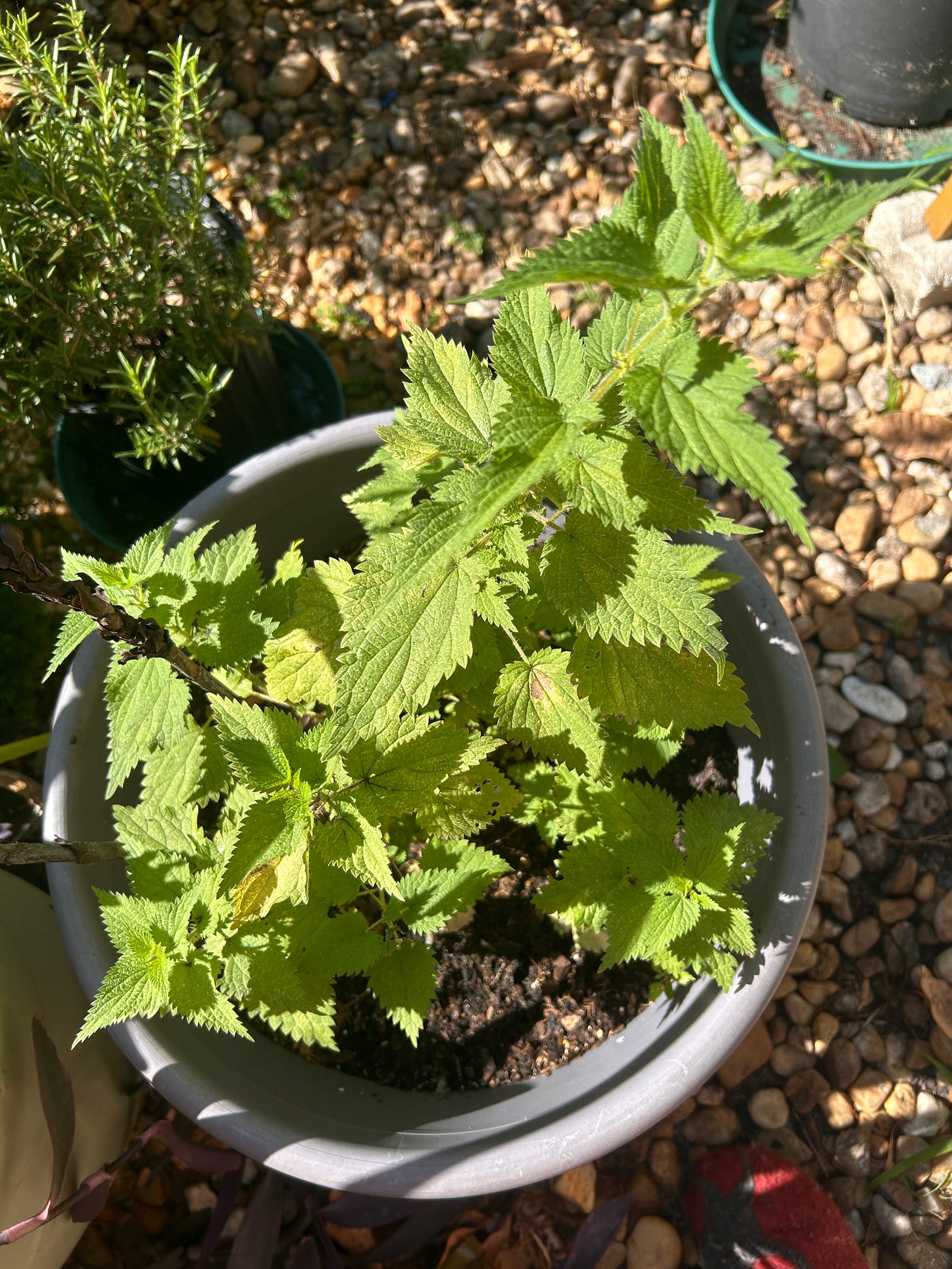No matter how much we may think so, we do not exist in isolation. We exist IN RELATIONSHIP to the rest of sentient life all around us.
We exist within a giant web of life, with strands of connectivity reaching across the cosmos and down to the tiniest little bug in the soil. Our bodies are made up of oxygen, hydrogen, nitrogen, and carbon atoms, among others. All those atoms are continuously exchanged between all the other living and nonliving substances within our universe.
The most obvious example is the link between our respiration and that of trees. Trees absorb carbon dioxide and release oxygen, which we breathe in while breathing out carbon dioxide for them. We are literally linked with the plant realm through every breath we take.
Traditional healing paradigms prioritize our relationships with other sentient beings. Buddhism includes “all sentient beings” in prayers and offerings. Lakota prayers end with the phrase, translated into English, “to all my relations.” These are not just human relations but also animals, birds, fish, trees, rivers, and mountains, to name a few.
The miraculous thing about nature is that it will meet us, wherever we are. When we reach out or just begin to start noticing small little things, like the tree in our neighbor’s yard, or the rising sun reflecting off the dew in the morning, or the call of a bird outside our window, nature will start responding back. Nature will respond by sending us tendrils of just the right medicine for our ailment, right where we are.
When we acknowledge the living world we are a part of by having reverence and respect for it, it will acknowledge us back by blessing us with its gifts of medicine.
I experienced this this past growing season with two of my favorite herbs. One would not think that plants, firmly rooted in the ground, would physically travel, finding their way to one’s garden, but that is what happened.
I live in subtropical South Florida. We have some amazing tropical plants that do not grow further north, and we lack some of the typical medicinal herbs that grow like weeds up north. Our growing season is essentially like living in the southern hemisphere. We plant gardens in the Fall, and they grow until it gets too hot and humid for most vegetables and many herbs by the end of April/May.
In 2020, during the midst of COVID-19, I moved into a house with a small flat space in the backyard with room enough for a small container garden. Tulsi, also known as Holy Basil, entered my life and became a comforting companion through the lockdown and pandemic. She grows beautifully here in hot, humid air, making it through the summer and reseeding herself in the late winter.
My two other favorite plant allies during Covid, nettles and mugwort, can be found growing wild up north, but do not exist in the forests, ditches, or wild spaces where I live. I had to buy them in their dried form from northern herbal farms. I went through as much nettle as I did Tulsi, and mugwort is my bedtime tea mug nearly every night.
When I was a young college student, long before veterinary school, I had the opportunity to study with Susan Weed of the Wise Woman herbal tradition. One of her favorite ways of using plants as medicine is to drink nourishing infusions of medicinal weeds, a simple but powerful form of self-care and preventative medicine.
All through the Covid years, I imbibed my nourishing herbal infusions of nettle, mugwort, and Tulsi. As I harvested the fresh Tulsi from my garden, I would think about nettle and mugwort. I even perused the gardening sites, hoping they had made it to the native plant list in Florida. As I took my dogs on walks through our local patch of woods, I would daydream of finding a nettle patch tucked away and even found some look-alikes.
This fall, I was walking through the tables laid out with seedlings at my local gardening coop and CSA, and lo and behold, they had heard my calls. There sat young little seedlings of both nettle and mugwort, right beside one another! They had found their way to South Florida! I think I even let out a squeal of excitement!
One of the girls who works for the coop decided to get some seeds and try growing them here. Of course, I brought one of each of them home with me.
Here are the baby mugwort and nettle plants tucked into their large pots. Our soil is sand on top of a coral reef, and the insects are outrageous. The easiest way to grow garden plants and control insects is in containers or raised beds.
And here they are now in March:
It is the coming up on the first of April, time to cut back and harvest what I can before the heat and humidity of summer comes rolling in. I hope to winter-over my nettles and mugwort.
I never would have thought they would make their way to me!
If you want to reconnect or connect deeper with the natural world and develop relationships with plants, trees, birds and animals, consider joining my online community.
With its roots in Taoism and Traditional Chinese Medicine, we journey through a full circle of the seasons, tracking the 5 elements, the lunar cycles, exploring nature where we live and learn how to open our hearts to receive the medicine all around us!
It is focused on learning to live in balance and harmony with all of life around us, and giving our pets a healthy, thriving life. Living in relationship helps all of us to heal.








Thank you Josie, trying some different things here (az) this year, a bayleaf tree....and some other things.....happy growing...
Beautiful and True! I have so much Mugwort here. If you ever need any, Josie, just LMK! 💚